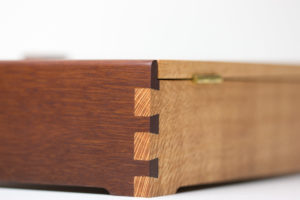At Gifkins we often get asked ‘what’s the strongest woodworking joints to use? So, in this latest series we discuss the strength of a dovetail joint, compared to a pocket hole jig joint.
We see, from time to time, a lot of products entering the market that claim to be many things. So let’s look at some pros and cons for each joint:
Pros:
– Does not require complex measurements
– Can be quick
– Simple to use
Cons:
– Joints can break more easily the more conventional joints
– Once broken, the joint cannot be repaired
– Really is just a short term fix.
 Dovetail joint pros and cons
Dovetail joint pros and consPros:
– Extremely strong timber joint, especially for drawers
– No nails or screws needed, just glue!
– Classic looking and very common
– The Gifkins Dovetail makes it so simple…
-No measuring! No fiddling! No fuss!
Cons:
– Making dovetails by hand can be hard for a beginner
– Without the simplicity of the Gifkins jig you can get misalignment.
So, in conclusion we can see in the image above, how the interlocking pins and tails make for an extremely strong jointing method. The dovetail joint is one of the most attractive woodworking joints; and combined with different timber species can give a very satisfying result. From Chinese emperors to ancient Egyptians…dovetail joints have been known to exist!
For further information on history and types of dovetail joints, visit this link.
See Col from Gifkins giving a great demonstration on how to use the dovetail jig here.